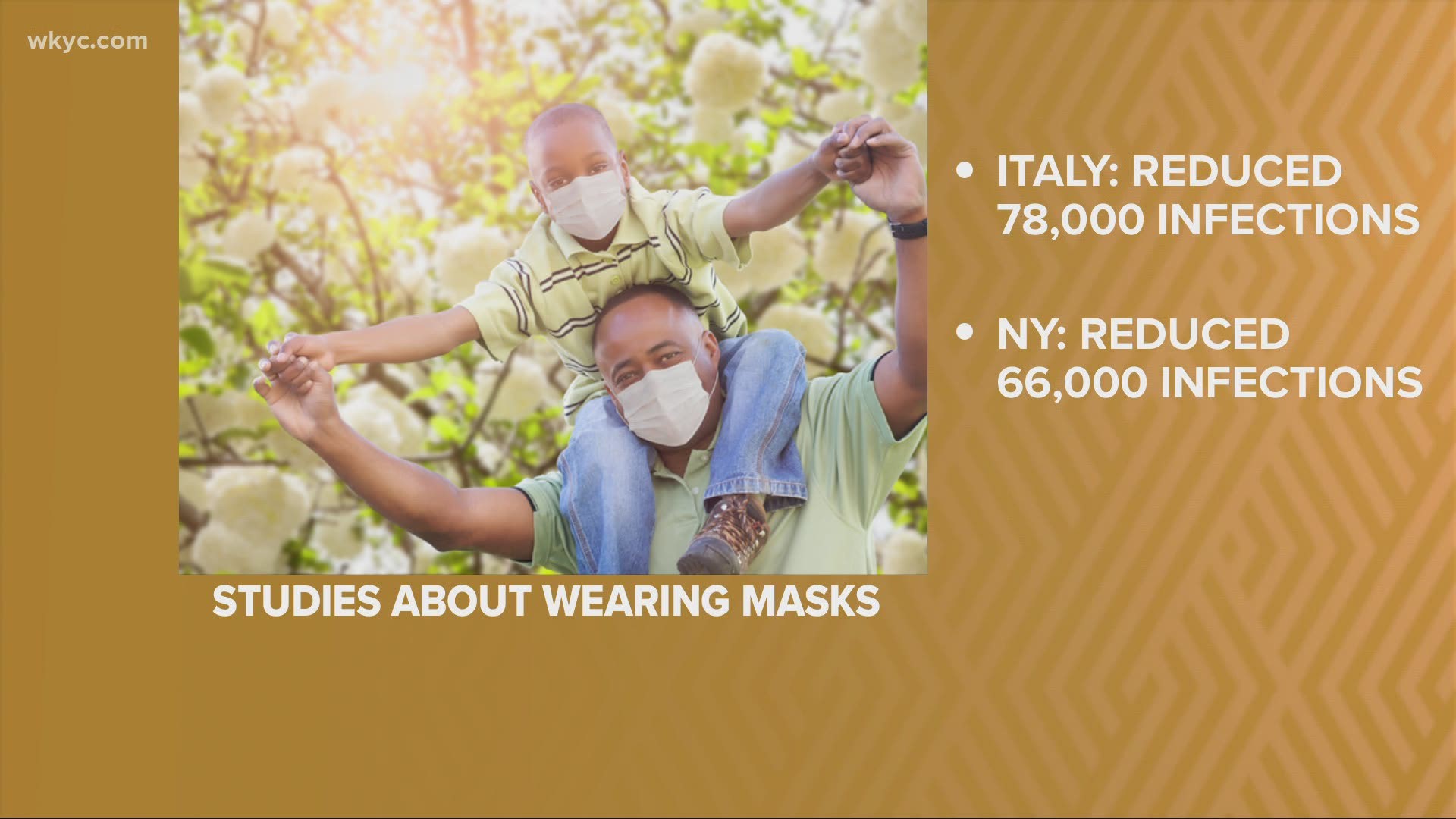CLEVELAND — On Thursday, the state of Ohio reported a spike in the number of cases of COVID-19. And that number isn't necessarily due to an increased amount of testing.
I know a lot of you are sick of hearing about this and probably sick of me telling you about it, but here's what we know.
The coronavirus is still new and we're still learning about it. That means science will continually change. I know you want solid answer for this, but the greatest minds in the world are working on this and that answer is fluid.
But here's what we know works: Common sense, washing your hands, social distancing. We've already shown in Ohio that it works, so keep at least six feet away from strangers.
So then there's masks. Data is coming out that shows masks work, too. So if you have to be in a public place with people you don't know, slap a mask on because that barrier may be helping you too.
Last week, Dr. Amy Edwards at University Hospitals told us that contact tracers are finding those who wore masks around infected people did not get the virus.
Now, a Texas A&M University professor and his team of researchers found if you don't wear one, your chance of getting the virus increases dramatically. The team examined trends from China, Italy and New York City, and found using a face mask reduced the number of infections by more than 78,000 in Italy from April 6-May 9 and by over 66,000 in New York City from April 17-May 9.
So maybe it's time to start thinking of your mask as a seatbelt, wear it to protect yourself as well as others.
Two more takeaways from Thursday's Ohio COVID-19 numbers: 60% of those who've tested positive are betweeen the ages of 20 and 49.
And a new study shows that for every case that's reported, there are actually ten other infections. The CDC says the true number of Americans who've been infected with COVID-19 may top 20 million. The estimate comes from looking at blood samples across the country for the presence of antibodies to the virus.
For every confirmed case of COVID-19, 10 more people had antibodies. So that means a lot of asymptomatic people were spreading virus without realizing it. It also may explain why our case ages are declining.
The spike is happening to younger populations who typically aren't at high risk for complications. So if they're not having symptoms and not practicing safety guidelines they likely spread the virus when they were contagious.

